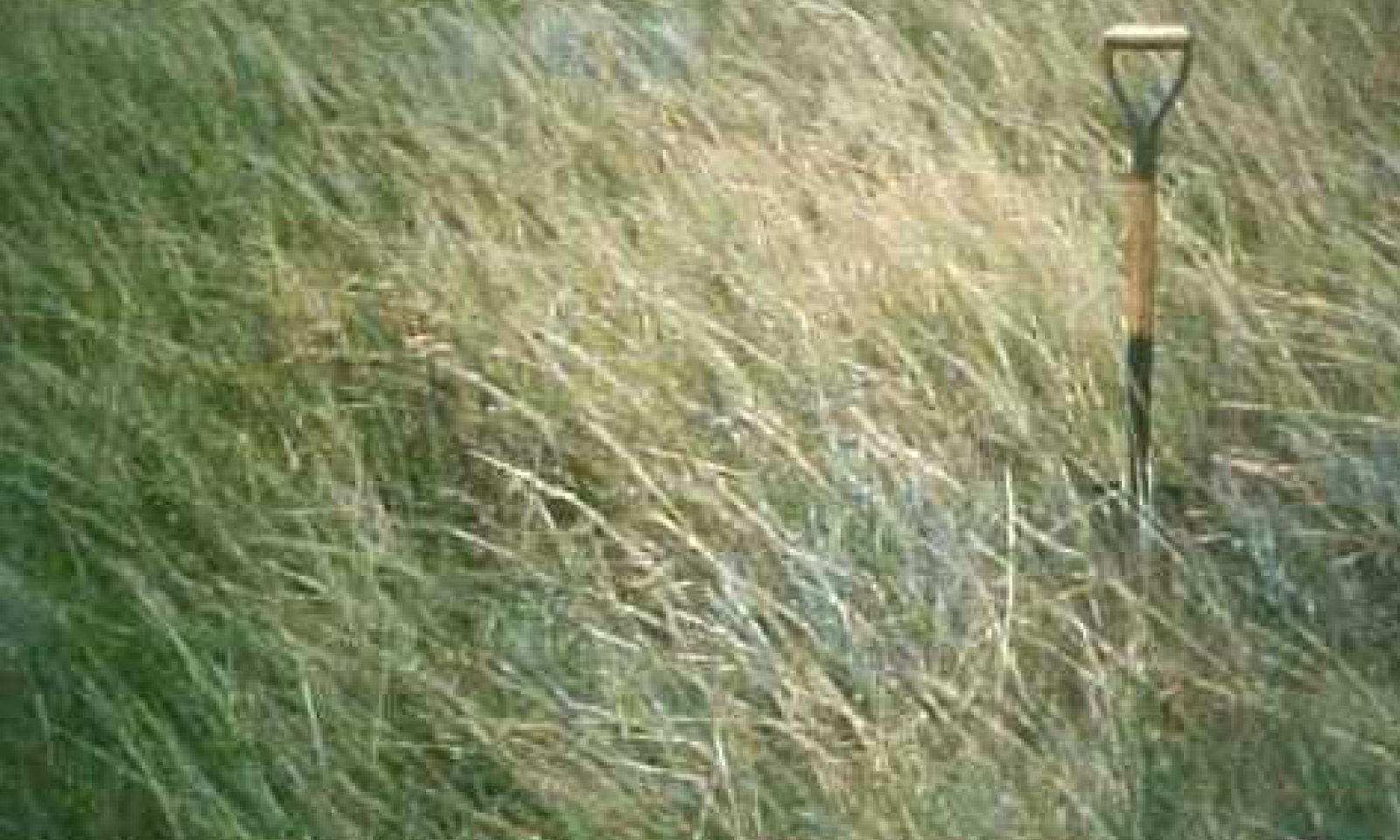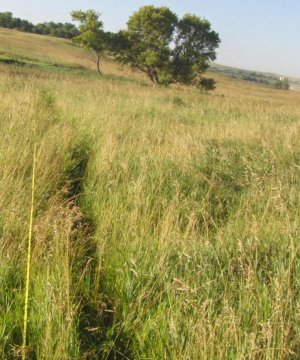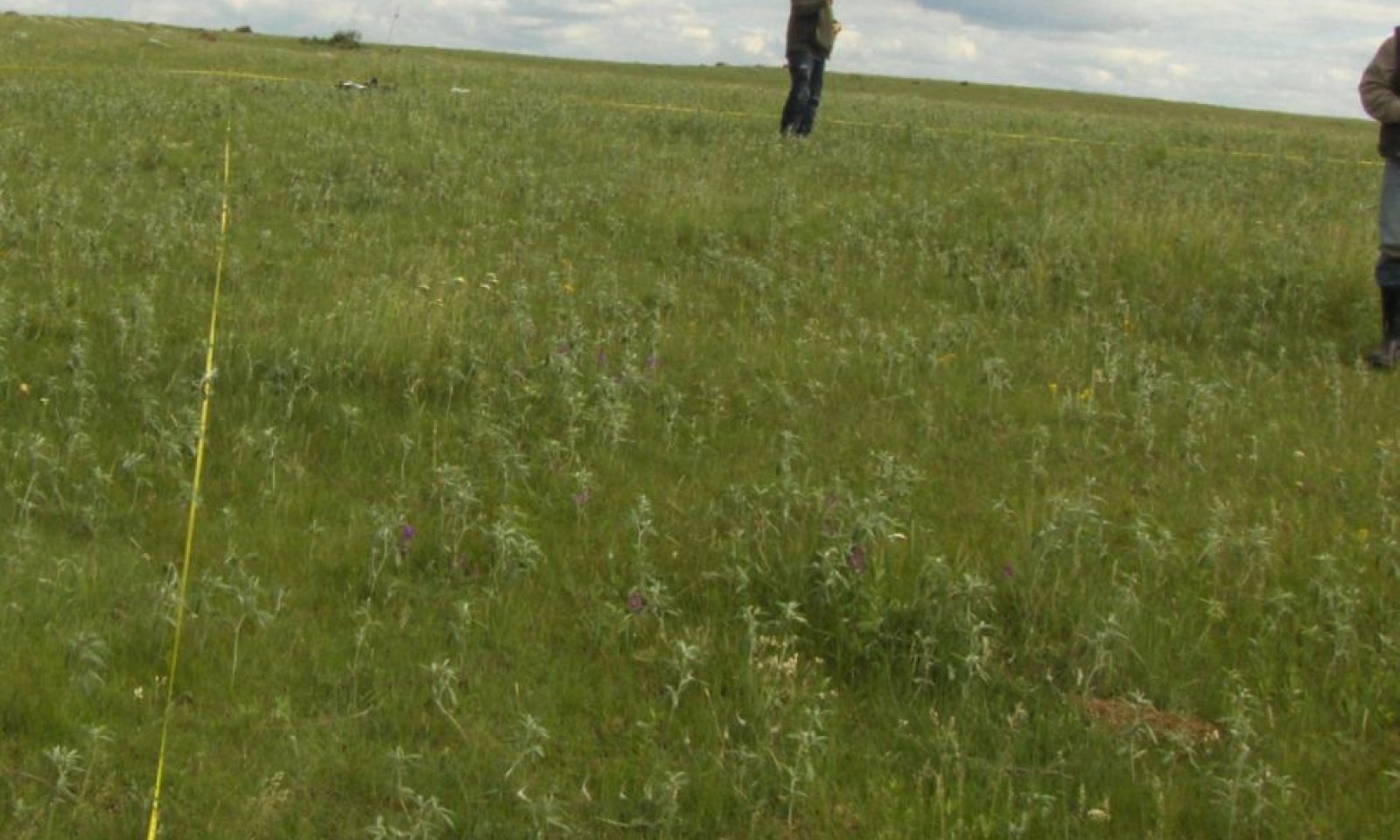
Loamy
Scenario model
Current ecosystem state
Select a state
Management practices/drivers
Select a transition or restoration pathway
- Transition T1 More details
- Transition T2 More details
- Transition T3 More details
- Restoration pathway R1 More details
- Restoration pathway R2 More details
-
No transition or restoration pathway between the selected states has been described
Target ecosystem state
Select a state
Description
This state represents the natural range of variability that dominates the dynamics of this ecological site. This state is dominated by cool season grasses. The primary disturbance mechanisms for this site in the reference condition include frequent fire and grazing by large herding ungulates. Timing of fires and grazing coupled with weather events dictate the dynamics that occur within the natural range of variability. Cool season species can decline and a corresponding increase in short warm season grasses will occur.
Submodel
Description
This state is very similar to the reference state. The invasion of introduced cool season sodgrasses has altered the natural range of variability for this ecological site. This state is still dominated by native cool season grasses, but invasive introduced cool season sodgrasses are now present in all community phases of this state. The primary disturbance mechanisms for this state include grazing by domestic livestock and infrequent fires. Timing and duration of grazing coupled with weather events dictate the dynamics that occur within this state. The cool season native grass can decline and an increase in introduced sod grasses will occur. Often this state appears as a mosaic of community phases caused primarily by continuous season-long grazing.
Submodel
Description
This state is the result of invasion and dominance of Kentucky bluegrass and/or smooth brome. This state is characterized by these two species and an increasing thatch layer that effectively blocks introduction of other plants into the system. Once the state is well established, single disturbance events such as high intensity fires or severe grazing, will not result in more than a very short term reduction of these two species. These events may reduce the dominance of the sodgrasses, but due to the large amount of rhizomes in the soil there is no opportunity for the native species to establish and dominate before the sodgrasses rebound and again dominate the system.
Submodel
Description
This state is the result of long term repeated disturbances such as long-term drought coupled with severe defoliation or severe long-term defoliation when site is located next to perennial water sources. Repeated disturbances deplete stored carbohydrates, resulting in weakening and eventual death of the cool season mid-grasses resulting is a shift to community phases dominated by short grasses and forbs.
Submodel
Mechanism
This is the transition from the native grass dominated reference state to a state that has been invaded by introduced cool-season grass species. When propagules of Kentucky bluegrass are present, this transition occurs as natural and/or management actions favor a decline in the composition of warm and cool season bunch grasses and an increase in cool-season sodgrasses. This transition is compounded by a change in the historic grazing and fire regime where native herbivores would follow periodic fires with grazing. This historic grazing/fire sequence has largely been replaced by chronic season-long or heavy late season grazing. Complete rest from grazing and suppression of fire can also lead to this transition. The threshold between states is crossed when Kentucky bluegrass, smooth brome, and other introduced species become established on the site. These species typically are part of functional/structural groups that were not present in the Reference State.
Mechanism
Complete rest from grazing and elimination of fire are the two major contributors to this transition, especially when smooth brome is present. Preliminary studies indicate this threshold may exist when Kentucky bluegrass exceeds 30% of the plant community and native grasses represent less than 40% of the plant community composition. The opportunity for high intensity spring burns is severely reduced by early green up and increased moisture and humidity at the soil surface and grazing pressure cannot cause a reduction in sodgrass dominance. Production is limited to the sod forming species. Infiltration continues to decrease and runoff increases, energy capture into the system is restricted to early season low producing species. Nutrient cycling is limited by root depth of the dominate species.
Mechanism
Heavy, continuous season-long grazing shifts the competitive advantage to the highly grazing tolerant short grass and grass-like species. Reduced litter amounts, elevated surface temps and a reduced infiltration combine to favor drought tolerant, short statured species.
Mechanism
This restoration pathway may be initiated with the combination of prescribed burning followed by high levels of prescribed grazing management. The success of this restoration pathway depends on the presence of a remnant population of native grasses in community phase 3.1. This remnant population may not be readily apparent without close inspection. The application of prescribed burning may be needed at relatively short intervals in the early phases of this restoration process. Some previous efforts have shown promise with early season prescribed burning; however, fall burning may also be effective under certain circumstances. Both prescribed grazing and prescribed burning are necessary to successfully initiate this restoration pathway.
Model keys
Briefcase
Add ecological sites and Major Land Resource Areas to your briefcase by clicking on the briefcase (![]() ) icon wherever it occurs. Drag and drop items to reorder. Cookies are used to store briefcase items between browsing sessions. Because of this, the number of items that can be added to your briefcase is limited, and briefcase items added on one device and browser cannot be accessed from another device or browser. Users who do not wish to place cookies on their devices should not use the briefcase tool. Briefcase cookies serve no other purpose than described here and are deleted whenever browsing history is cleared.
) icon wherever it occurs. Drag and drop items to reorder. Cookies are used to store briefcase items between browsing sessions. Because of this, the number of items that can be added to your briefcase is limited, and briefcase items added on one device and browser cannot be accessed from another device or browser. Users who do not wish to place cookies on their devices should not use the briefcase tool. Briefcase cookies serve no other purpose than described here and are deleted whenever browsing history is cleared.
Ecological sites
Major Land Resource Areas
The Ecosystem Dynamics Interpretive Tool is an information system framework developed by the USDA-ARS Jornada Experimental Range, USDA Natural Resources Conservation Service, and New Mexico State University.








